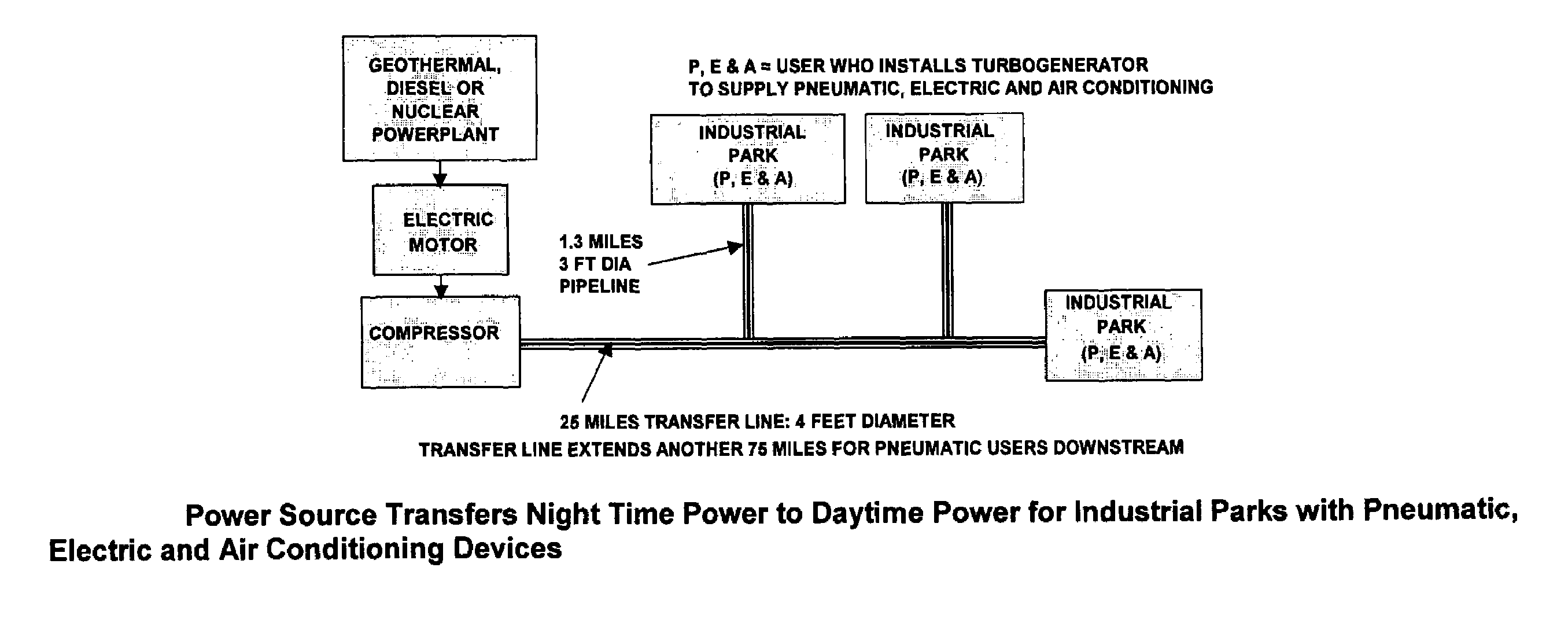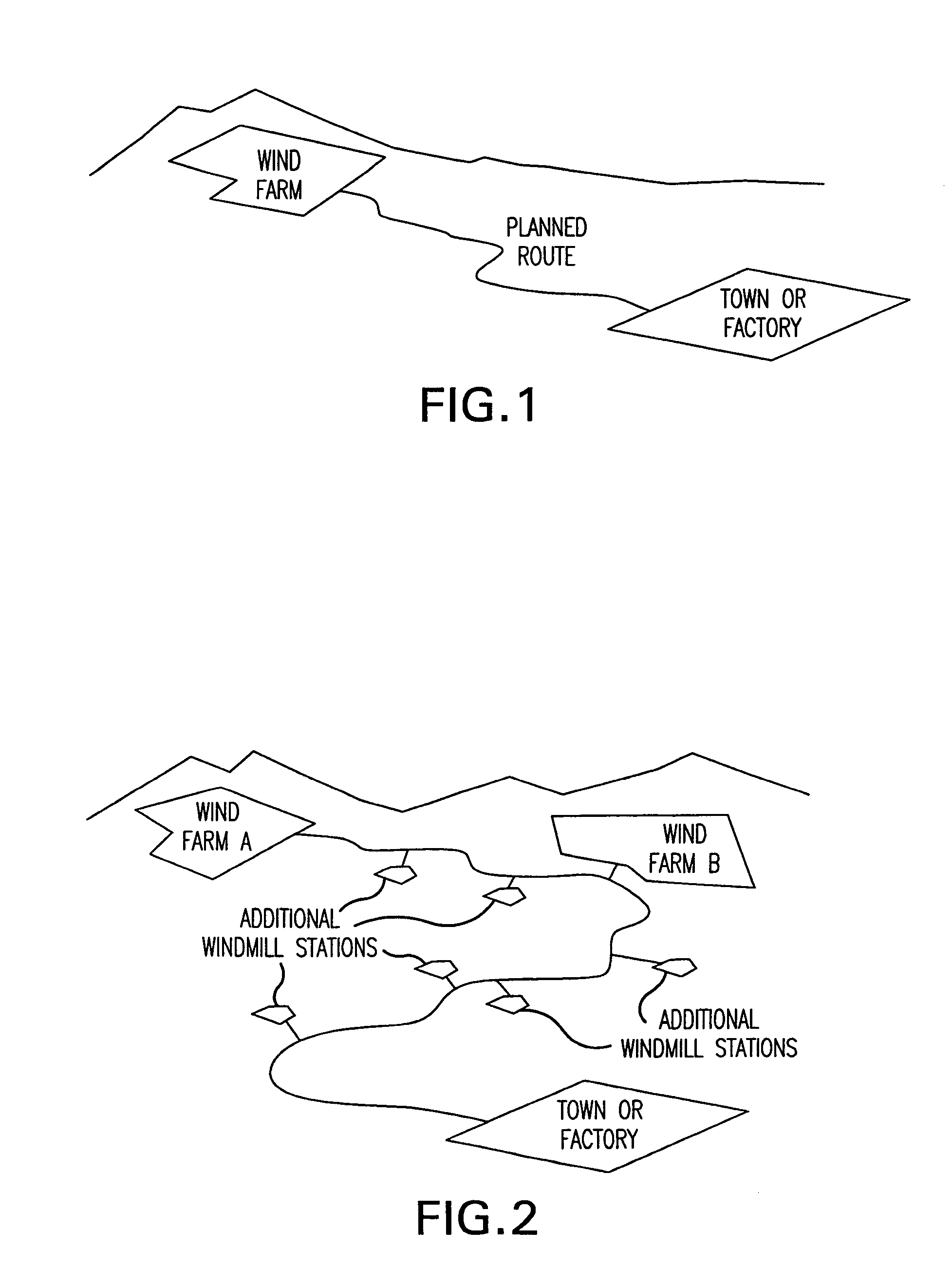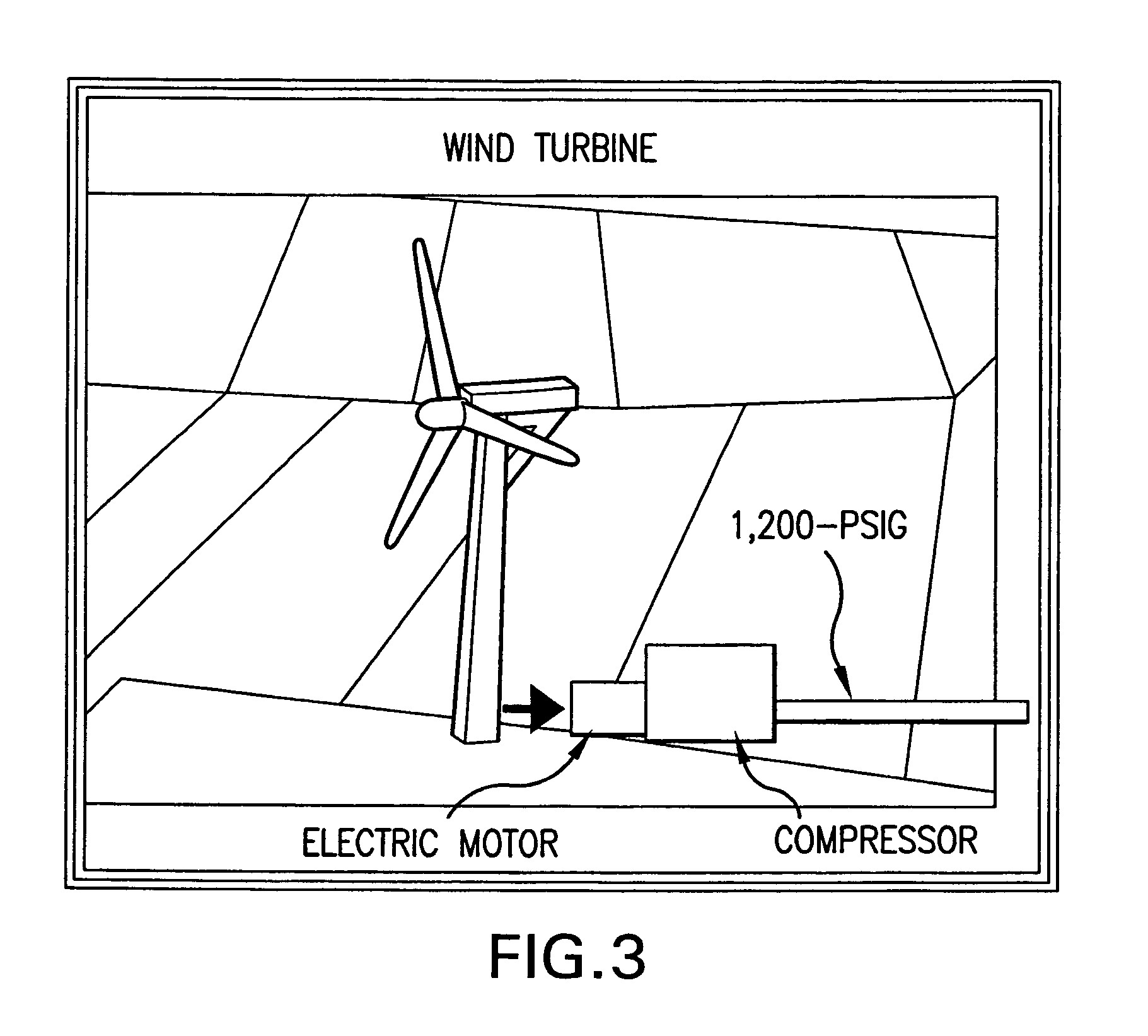Method of transporting and storing wind generated energy using a pipeline
a technology of wind generated energy and pipeline, which is applied in the direction of electric generator control, machine/engine, greenhouse gas reduction, etc., can solve the problems of increasing the cost of electrical transmission lines, and increasing the cost of constructing electrical transmission lines, so as to reduce the cost, reduce the cost, and increase the economic effect of installing the pipeline system
- Summary
- Abstract
- Description
- Claims
- Application Information
AI Technical Summary
Benefits of technology
Problems solved by technology
Method used
Image
Examples
second embodiment
[0112]In a second embodiment, heating is preferably provided on a limited basis. For example, in this embodiment, only an existing heat source is preferably used, such as the waste heat generated by the compressors as the air is compressed, which can be stored in the pipeline. Additional heat from the sun, by locating the pipeline above ground, on the desert floor, can also be used. This way, there is a higher efficiency of delivery of electrical power, even though at the expense of less chilled air. In this embodiment, however, an effort is made to eliminate using any additional energy source to provide heat, which would require its own power source to operate.
first embodiment
[0113]This embodiment has the advantage of being able to generate, in addition to electrical power, a certain amount of chilled air. This embodiment preferably takes advantage of the chilled air being generated by the turbo expander, i.e., as the compressed air is released, to provide chilled air for cooling purposes. For example, the waste chilled air from the turbo expander can be used for refrigeration and air conditioning purposes, which is especially helpful when the community or facility that the pipeline services is located in a warm climate. When the waste heat is used, the system contemplates being able to heat the compressed air in the pipeline from normal ambient temperature of about 70 degrees F., as in the first embodiment, to a temperature of about 250 degrees F., wherein the chilled air that is co-generated can then be increased in temperature to about minus 75 degrees F.
3. The Third Configuration:
third embodiment
[0114]In a third embodiment, the system is advantageously provided with several heaters to enhance the generation of electricity from the compressed air. For example, waste heat from the compressors, or other heat sources, can be provided, as the compressed air is released, to maximize the generation of electricity thereby. For example, this embodiment contemplates using at least one of three different types of heating systems, including 1) solar thermal collectors that utilize energy from the sun, including locating the pipeline above ground, to make efficient use of the sun's heat, 2) waste heat collectors to circulate the waste heat generated by the compressor to the compressed air in the pipeline, and 3) a separate heating unit, such as a fossil fuel burner, to introduce heat into the pipeline, or add heat to the turbo expander input as compressed air is being released by the turbo expander. The invention also contemplates using other standard methods of providing heat to the co...
PUM
 Login to View More
Login to View More Abstract
Description
Claims
Application Information
 Login to View More
Login to View More - R&D
- Intellectual Property
- Life Sciences
- Materials
- Tech Scout
- Unparalleled Data Quality
- Higher Quality Content
- 60% Fewer Hallucinations
Browse by: Latest US Patents, China's latest patents, Technical Efficacy Thesaurus, Application Domain, Technology Topic, Popular Technical Reports.
© 2025 PatSnap. All rights reserved.Legal|Privacy policy|Modern Slavery Act Transparency Statement|Sitemap|About US| Contact US: help@patsnap.com



